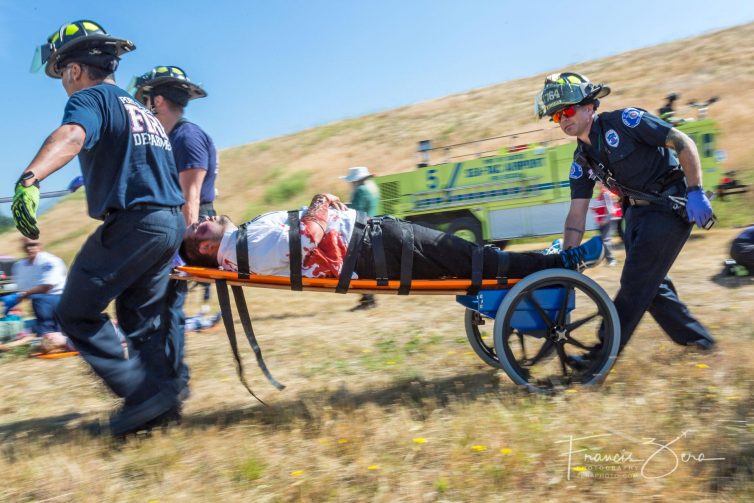
Firefighters from the Port of Seattle transport a simulated casualty during the airport’s recent triennial disaster drill
The FAA requires airports to conduct a comprehensive disaster drill every three years. On July 12, Seattle-Tacoma International Airport (SEA) did its thing, and it was quite a sight.
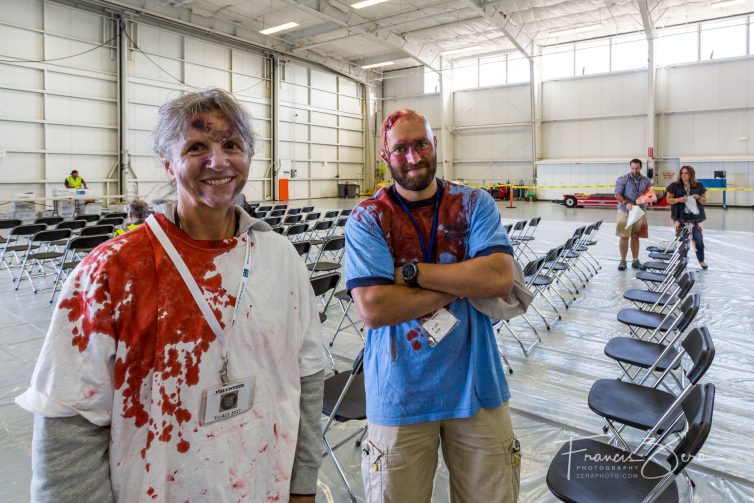
Volunteer “victims” hung out in a comfortable hangar, waiting for the drill to begin
Volunteer victims included employees of the airport, several airlines, airfield support companies, the FAA, and the TSA. They received elaborate makeup at a remote hangar in order to maximize the realism of the drill.
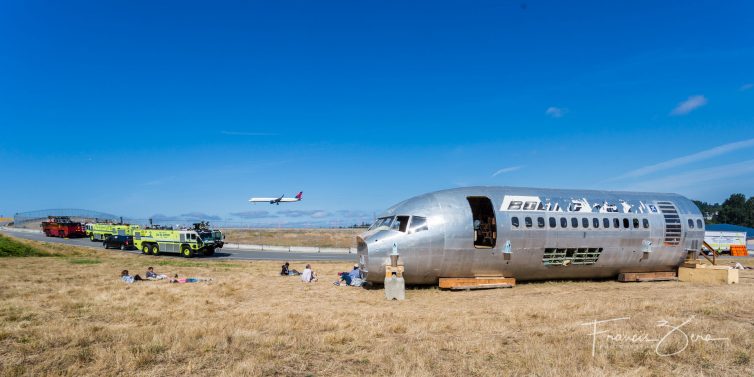
An old Boeing 757 fuselage mock-up, trucked in from Moses Lake, Wash., was placed between runways for the drill
Unlike the past two events I’ve covered, which were held on a runway that needed to be closed for an entire morning, this drill was held in a small valley between runway 34L and 34C, allowing most airport operations to run normally.
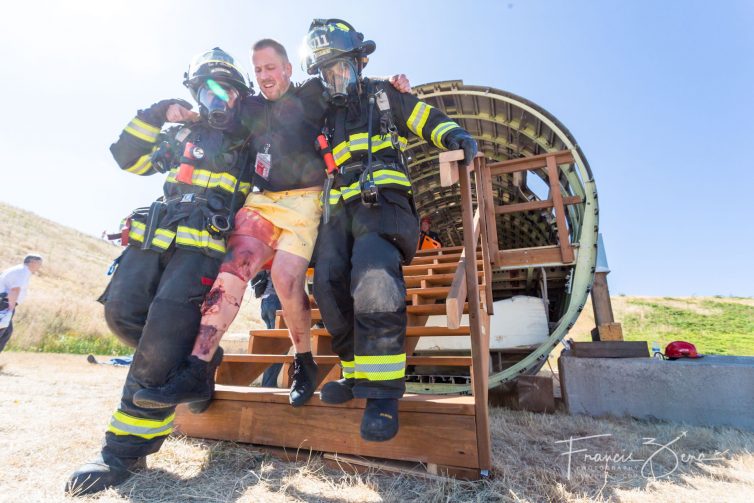
A new wooden staircase made the old fuselage section a bit easier to access
Safety outweighs absolute realism, so a staircase was constructed to allow access to the fuselage to avoid any real injuries during the exercise.
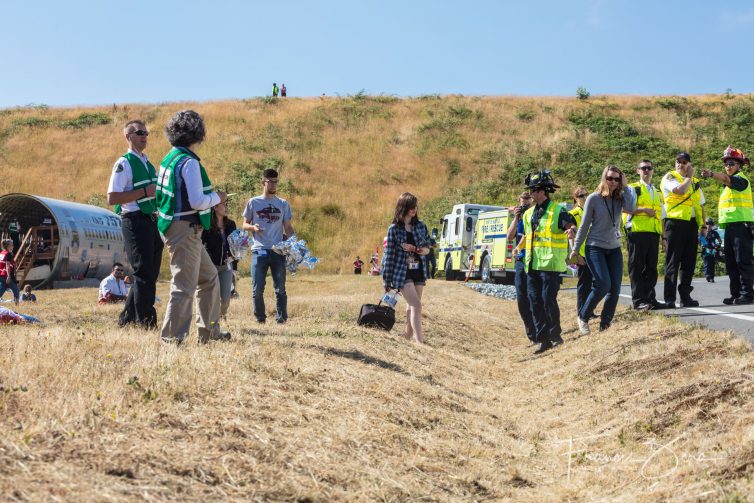
Several “victims” were coached to drag their luggage with them, while others were asked to hang around the fuselage taking selfies to provide rescuers the opportunity to work around a couple of trending hazards.
The volunteer victims were instructed to provide realistic issues for rescuers to confront, ranging from dazed people dragging their luggage aimlessly around the scene, people with various injuries (or no injuries) slowing things down by trying to take selfies, people yelling and screaming, walking wounded, and more.
BONUS: My Day as a [Mock] Airline Accident Victim!
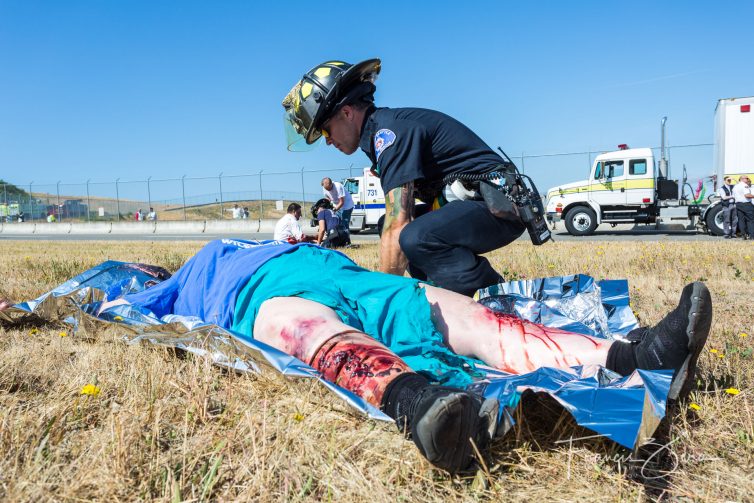
The exercise’s faux victims didn’t lack for realistic-looking trauma
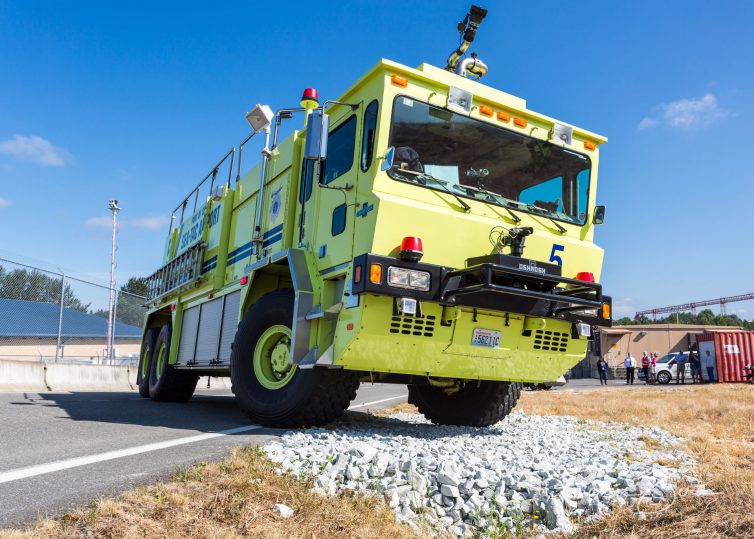
An up-close look at a responding airport fire truck
There was no shortage of equipment – more than 50 rescue vehicles turned up: airport fire trucks, ladder trucks, hazmat vehicles, police cars, ambulances, and more.
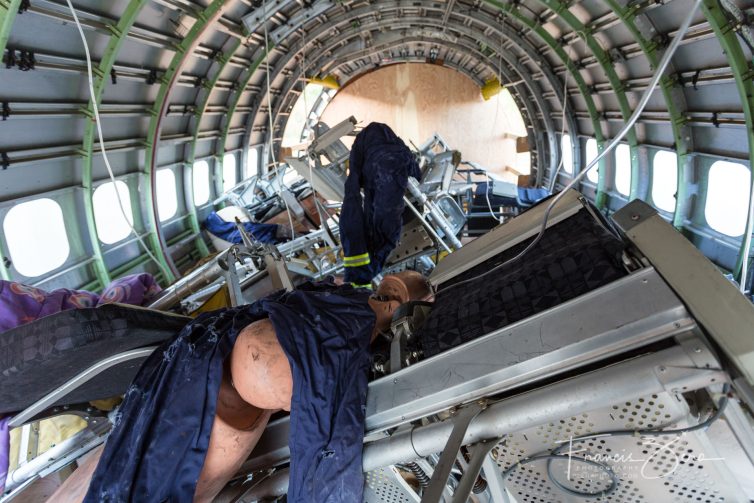
A right proper mess, that
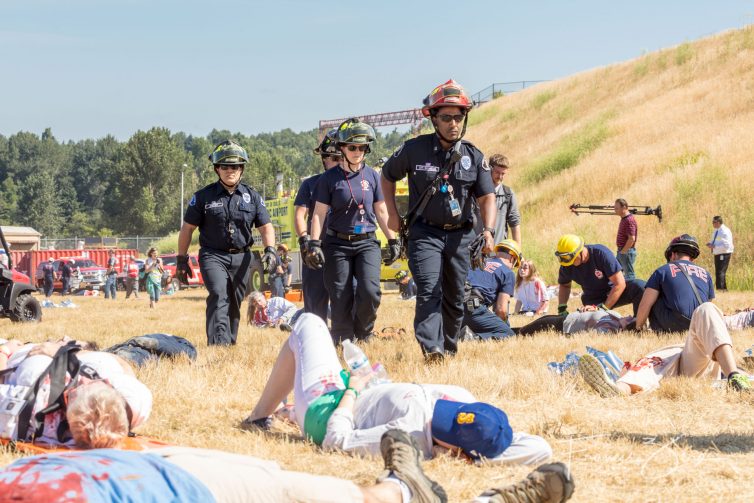
There were plenty of rescuers, and plenty of faux victims for them to attend to
Dozens of police and fire agencies from across the region participated in the exercise, drawing an estimated 175 firefighters.
Even though they used a partial 757 fuselage, the exercise was designed to simulate the crash of a 737-sized aircraft with 150 passengers.
Training is an essential component of properly-functioning emergency services – it’s always comforting to see how well prepared these agencies are for a real disaster scenario.
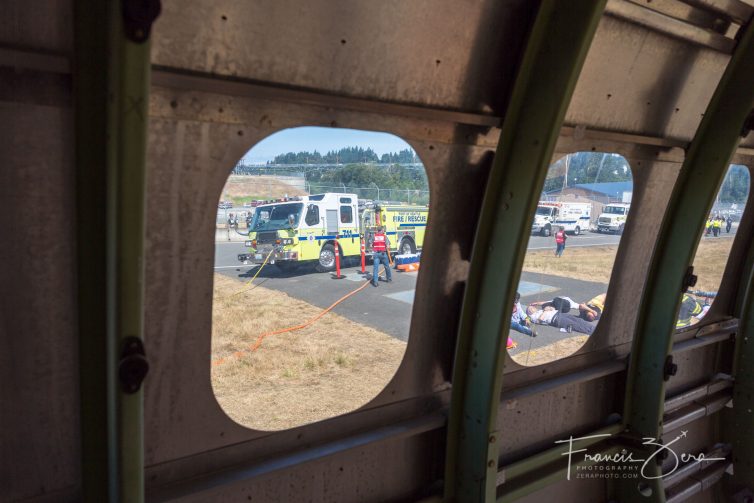
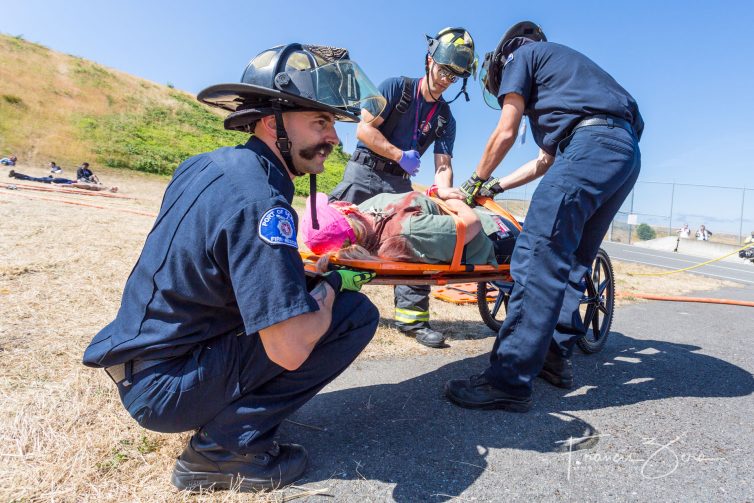
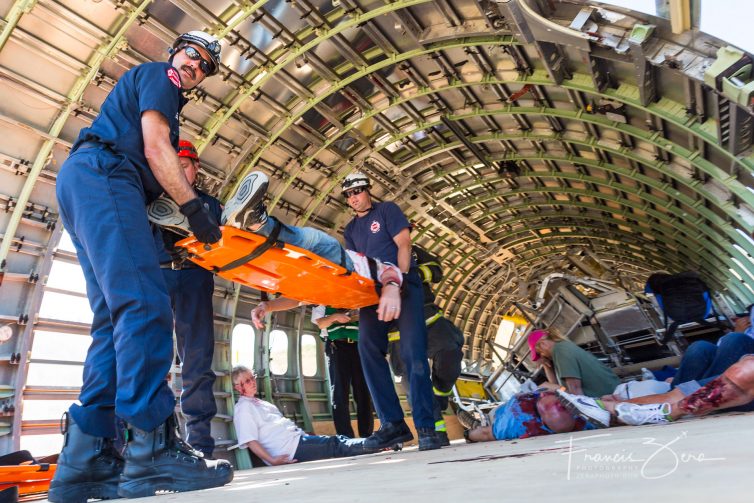
My son and I did one of these for the Massachusetts Bay Transportation Authority (MBTA) — we were on a commuter rail train and it filled with “smoke” after it “hit” a car crossing the road. Very realistic and really cool to be a participant in these types of training. I would love to do one at KBOS but I don’t know anybody there.
Great photos, bet it was quite something to see. You just cant beat hands-on training for emergency situations!